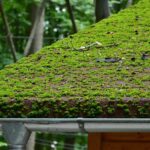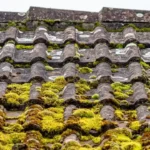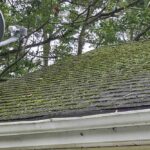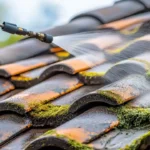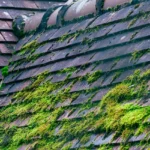When it comes to maintaining your home, one of the most critical aspects is roof repair. As a homeowner, ensuring the longevity and durability of your roof is paramount. In this discussion, we will delve into the best DIY tools for roof repair, designed to help you save both time and money while enhancing the safety of your home. Whether you’re addressing minor leaks, replacing shingles, or performing routine maintenance, having the right tools can make all the difference.
Understanding the Importance of Roof Repair
Your roof is your home’s first line of defense against environmental elements. Over time, exposure to sun, rain, and wind can lead to wear and tear. Regular maintenance, especially with the best DIY tools for roof repair, ensures that minor issues don’t escalate into major problems.

Essential DIY Tools
1. Safety Gear
Before you begin any work on your roof, prioritize safety. Invest in a sturdy ladder, ensuring it’s tall enough to reach your roof safely. Consider exploring this guide to ladders to ensure safe practices.
2. Hammer and Roofing Nails
Hammers are vital for tasks such as shingle replacement. Ensure you have a reliable hammer and a compatible set of roofing nails.
3. Utility Knife
A sharp utility knife is essential for cutting shingles and other roofing materials. Its versatility makes it indispensable for any repair job.
4. Roofing Tape
For temporary fixes, roofing tape can seal small leaks and prevent water damage until more permanent repairs can be done.
5. Caulking Gun
A caulking gun is invaluable for sealing cracks and crevices. Ensure you use high-quality roofing sealant.
6. Pry Bar
Removing damaged shingles or nails requires a good pry bar. It’s ideal for lifting old materials without causing additional damage.
7. Measuring Tape
Accurate measurements are crucial in order to cut materials to size, ensuring precise fit and finish when conducting roof repairs.
8. Roofing Sealant
This is used alongside the caulking gun for long-term sealing of gaps, ensuring moisture doesn’t penetrate your roof’s structure.
9. Roof Brackets
Provide stability when working on sloped surfaces, making it easier and safer to maneuver your roofing project.
10. Chalk Line
A chalk line is essential for marking straight lines when laying shingles. This ensures a neat and aesthetically pleasing roof.
Key Considerations for DIY Roof Repair
Understanding the scope of your project is crucial. Some tasks, like fixing minor sagging, require specific techniques and tools. Consider checking this guide to roof sagging for more details.
Why Opt for DIY?
The satisfaction of completing a project yourself, coupled with the potential savings, makes DIY roof repair appealing. Plus, using the best DIY tools for roof repair can significantly enhance your skills.
Challenges and Solutions
While embarking on a DIY journey can be rewarding, it’s not without its challenges. Weather conditions, accessibility, and knowledge gaps can be obstacles. Educating yourself through reliable resources and using top-notch tools can mitigate these issues. If you’re facing issues like curled shingles, consider this guide on fixing shingles.
Additional Resources
If you’re seeking more detailed guidance, the Owens Corning blog provides a wealth of knowledge on maintaining and repairing roofs.
Environmental Considerations
Always be mindful of the materials you use and ensure they’re environmentally friendly. This not only benefits the planet but can enhance your home’s energy efficiency.
Budgeting and Planning
Plan for contingencies by allocating a budget for unexpected expenses. Familiarize yourself with different pricing options to make informed decisions.

Maintaining Your New Roof
Once repairs are completed, establish a routine maintenance schedule. Regularly check for signs of wear and tear, and clean your gutters to prevent water damage. For detailed maintenance tips, the Zuper blog offers invaluable insights.
FAQs
What are the basic tools I need for a roof repair?
A reliable hammer, utility knife, roofing tape, and safety gear are indispensable. It’s essential to have these basic tools ready before starting any roof project.
Can I fix roof leaks myself?
Yes, minor leaks can often be repaired if you have the right tools and follow proper guidelines. In case of significant damage, however, consult a professional.
How often should I inspect my roof?
It’s recommended that you inspect your roof at least twice a year, preferably in the spring and fall, to catch any potential problems early.
Are there specific materials better for DIY projects?
Opting for durable, high-quality materials ensures longer-lasting repairs and reduces the need for frequent maintenance.
This article contains affiliate links. We may earn a commission at no extra cost to you.




